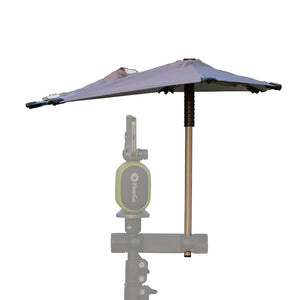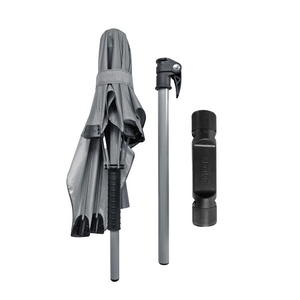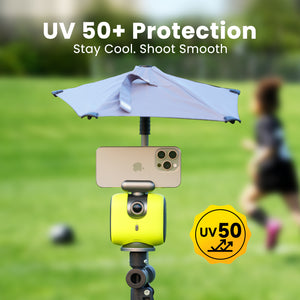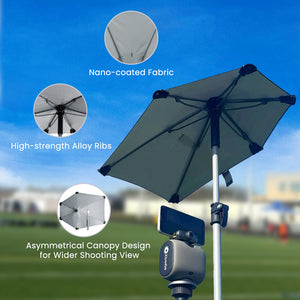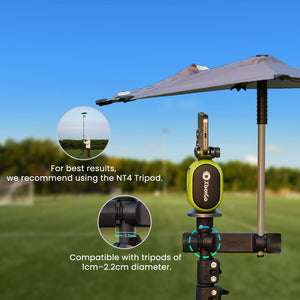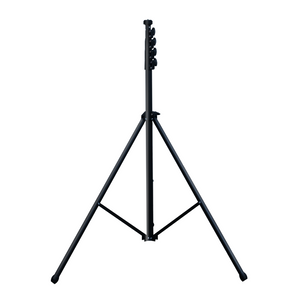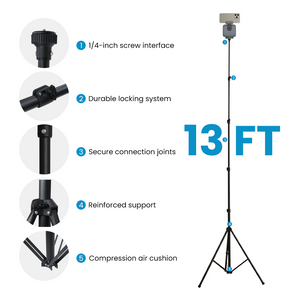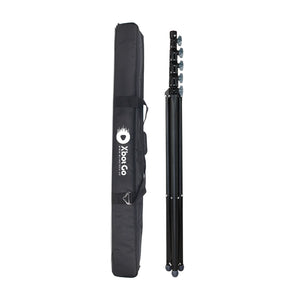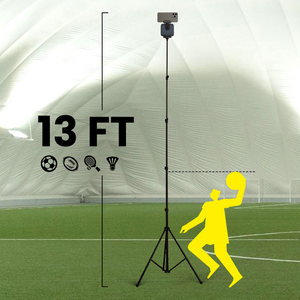XbotGo Chameleon AI Sports Camera
Hockey Glove Size Chart Guide: Find Your Perfect Fit
Finding the right hockey glove size shouldn't feel like solving a complex equation, yet countless players struggle with ill-fitting gloves that compromise their game. Whether you're shopping for your first pair or replacing worn equipment, this comprehensive guide combines traditional sizing wisdom with real-world insights from players who've learned the hard way.
How Hockey Glove Sizes Actually Work
Hockey glove sizing follows a surprisingly simple principle that many players overcomplicate. Unlike shoe sizes or clothing measurements, hockey gloves use a straightforward inch-based system that directly correlates to your hand measurements.
The Standard Measurement Method (Finger to Palm Base)
The gold standard for measuring hockey gloves hasn't changed in decades because it works. Start by placing a measuring tape at the base of your palm where it meets your wrist. Extend the tape to the tip of your middle finger, keeping your hand flat and fingers together. This single measurement, typically ranging from 4 to 8.5 inches, forms the foundation of proper glove sizing.
Why "Double the Measurement" Works for Most Players
Here's where hockey glove sizing gets interesting: you double your palm-to-fingertip measurement to find your glove size. If your hand measures 7 inches, you'll likely wear 14-inch gloves. This doubling method accounts for the protective padding and proper coverage needed beyond your actual hand size. The formula works because glove manufacturers design their products around this standard, creating consistency across the industry—at least in theory.
Age Category Classifications (Youth, Junior, Senior)
Hockey gloves fall into three main categories, each designed for specific age ranges and body types:
Youth (8"-9"): Designed for players aged 4-9, these gloves accommodate smaller hands while providing essential protection for developing players.
Junior (10"-12"): Bridging the gap for players aged 8-14, junior gloves serve pre-teens and early teenagers who've outgrown youth equipment but aren't ready for adult sizes.
Senior (13"-15"): Adult gloves starting at 13 inches, though this creates interesting scenarios where smaller adults and larger juniors overlap in sizing needs.
Complete Hockey Glove Size Chart by Demographics
Universal Size Chart (Age, Height, Weight Correlations)
|
Glove Size |
Hand Length |
Age Range |
Height Range |
Weight Range |
|
8" |
4-5" |
4-7 years |
3'3"-4'1" |
40-60 lbs |
|
9" |
4.5-5.5" |
6-9 years |
3'9"-4'7" |
50-70 lbs |
|
10" |
5-6" |
8-11 years |
4'3"-4'8" |
60-90 lbs |
|
11" |
5.5-6.5" |
9-12 years |
4'5"-5'0" |
70-100 lbs |
|
12" |
6-7" |
11-14 years |
4'11"-5'4" |
80-110 lbs |
|
13" |
6.5-7.5" |
14+ years |
5'5"-5'9" |
120-160 lbs |
|
14" |
7-8" |
14+ years |
5'7"-5'11" |
140-180 lbs |
|
15" |
7.5-8.5" |
15+ years |
5'9"-6'1" |
160+ lbs |
Women's Hockey Sizing Considerations
Women's hockey presents unique sizing challenges often overlooked by major manufacturers. Female players frequently find themselves choosing between junior 12-inch gloves that may be too short in the fingers or senior 13-inch gloves that feel bulky. The sweet spot for many women players falls in that 13-inch senior size, which explains why it remains in production despite some manufacturers discontinuing 13-inch shin guards.
Junior Transition Player Guidelines
Players aged 14-18 face the trickiest sizing decisions. A 16-year-old with adult-sized hands but a lean build might find senior gloves too bulky, while junior gloves leave fingers exposed. Consider intermediate options when available, or look for senior gloves with tighter-fitting profiles from brands like Bauer's Vapor line or CCM's JetSpeed series.
Smaller Adult and Intermediate Options
Adults requiring smaller equipment aren't anomalies—they're an underserved market. Many adult players successfully use intermediate skates, sticks, and yes, 13-inch gloves. If you're under 5'9" with proportionally smaller hands, don't force yourself into oversized equipment for the sake of wearing "senior" gear.
Major Brand Fit Profiles and Sizing Differences
Bauer Glove Sizing and Fit Characteristics
Bauer offers three distinct fit profiles that affect how their size charts translate to real-world comfort:
Vapor (Tapered Fit): Snug through the fingers and backhand with a wider cuff opening. Ideal for players prioritizing stick feel and quick hand movements.
Supreme (Anatomical Fit): Contoured closely to hand shape with minimal internal space. Best for players wanting maximum responsiveness.
Nexus (Traditional Fit): Generous volume throughout with a classic four-roll design. Perfect for players with larger hands or those preferring a looser feel.
CCM Size Chart and Fit Philosophy
CCM's approach differs slightly from Bauer's, with their own fit categories:
JetSpeed: Similar to Bauer's tapered fit but with CCM's specific finger stall design that some players find runs smaller than labeled.
Tacks: Offers more volume than JetSpeed with enhanced protection, comparable to a traditional fit but with modern materials.
Super Tacks: Maximum volume and protection, often running true to size or slightly large.
Warrior Glove Measurements and Style Differences
Warrior gloves traditionally run slightly larger than Bauer or CCM in the same labeled size. Their Covert line offers excellent stick feel with a snug fit, while Alpha models provide more traditional volume. Many players report needing to size down when switching to Warrior from other brands.
TRUE and Other Brand Considerations
TRUE gloves, known for customization in their skates, offer relatively standard sizing in gloves but with unique features like their Z-Palm technology. Smaller brands like STX (now discontinued) often ran small, requiring players to size up—a reminder that brand familiarity matters when ordering online.
Beyond Measurements: Testing Your Perfect Fit
The "Five-Point Fit Check" System
Professional equipment managers use this systematic approach:
- Fingertip Gap: Your fingertips should sit 1/4" to 1/2" from the glove's end
- Thumb Mobility: Full range of motion without webbing restriction
- Palm Contact: No bunching or gaps when gripping a stick
- Wrist Coverage: Complete protection with no exposed skin
- Cuff Integration: Seamless transition to elbow pad without overlap or gaps
Equipment Integration Testing (Elbow Pads and Sticks)
Never evaluate gloves in isolation. Put on your elbow pads and grab a stick—this combination reveals fit issues invisible during basic try-on. The cuff should meet your elbow pad's bottom edge without restricting wrist movement. When gripping your stick, the palm material shouldn't bunch or create pressure points.
Hand Volume vs Length Considerations
Here's what size charts miss: hand volume matters as much as length. Players with thin hands often find properly-sized gloves feel loose after break-in, while those with thicker hands may need to size up despite measuring correctly. This explains why one player at 6'0" and 130 pounds struggled between 13" and 14" gloves—his skinny hands needed the snugger fit of properly-sized 13" gloves rather than length-appropriate 14s.
Break-In Period Expectations and Timeline
New gloves undergo significant changes during break-in:
- First 3-5 sessions: Stiff materials soften, fingers settle into stalls
- After 10 sessions: Gloves reach 80% of final fit
- 20+ sessions: Fully broken in with personalized shape
Understanding this evolution prevents premature returns or size changes.
Solving Hockey Glove Fit Issues
When You're Between Two Sizes
The between-sizes dilemma plagues players at every level. Consider these factors:
- Protection Priority: Size up for maximum coverage
- Stick Handling Focus: Size down for better feel
- Position Considerations: Defensemen often prefer larger gloves for shot blocking
- Growth Potential: Youth players might size up with thicker gloves or double socks during transition
Dealing with Brand Inconsistencies
One player reported wearing different sizes from the same manufacturer—13" CCM Tacks but 14" CCM JetSpeed gloves. This isn't unusual. Build a reference chart of your sizes across brands through try-on sessions or careful online ordering with solid return policies.
Addressing Hand Shape Variations
Wide hands, long fingers, thick palms—standard gloves can't accommodate every variation. Solutions include:
- Targeting specific fit profiles (traditional for wide hands, tapered for narrow)
- Using grip tape on stick handles to compensate for palm gaps
- Adding thin liner gloves for volume adjustment
Seasonal and Growth Considerations
Youth players face unique challenges with growth spurts. Rather than buying new gloves mid-season, consider these adaptations:
- Temporary finger extensions using tape (emergency only)
- Switching between two pairs as hands grow
- Planning purchases for maximum usage across seasons
Conclusion
Perfect hockey glove sizing starts with the finger-to-palm measurement but requires real-world testing for true fit. While size charts provide guidance, your ideal gloves depend on hand volume, equipment compatibility, and playing style.
Test gloves with your stick and protective gear, account for break-in changes, and don't hesitate to challenge brand sizing assumptions. Whether you're buying your first pair or replacing worn equipment, prioritize proper fit over label sizes—your safety and performance depend on it.
Remember: the right gloves enhance your game while protecting your hands. Accept nothing less than comfort, protection, and confidence on the ice.
XbotGo Chameleon AI Sports Camera
Capture every moment with AI-powered tracking. Perfect for coaches, parents, and athletes who want seamless footage without manual filming.







 Soccer
Soccer Basketball
Basketball Ice Hockey
Ice Hockey Rugby
Rugby










